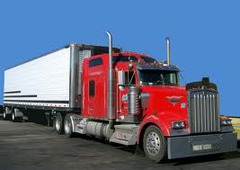AP Human Geography Chapter 11 Key Issue 2 – Flashcards
Unlock all answers in this set
Unlock answersquestion
Examples of bulk-reducing industries
answer
paper products, furniture, smelting Application: An industry where the inputs weigh more than the final product. To minimize transportation costs a bulk-reducing industry locates near its sources of inputs.
question
Examples of bulk-gaining industries

answer
Fabricated metals- parts from steel and other metals. Fabricated for use of machinery in farms, factories, offices and homes. Include microwave ovens, tv's, fridges, air conditioners. Beverage production: cheaper to send bottles to bottlers, obtain water from nearby and add syrup. application: something that gains weight during production. To minimize transportation costs industry needs to locate near where product is sold.
question
Single market manufacturers

answer
Specialized manufacturers with only one or two customers. optimal location for these factories is often in close proximity to customer. Example: producers of buttons, zippers, clips, pins, PARTS of Motor Vehicles Application: world's largest manufacturer of zippers is YKK, has factories in 68 countries in order to be near it's customers (manufacturers of clothing) Major motor vehicle producers such as GM and toyota, in past most motor vehicles were made in Michigan and shipped to nearby warehouses and distribution centers maintained in that state by the major producers. From warehouse producers sent the parts to plants around country. PART makers now just ship straight to assembly plants.
question
Benefits of different transportation methods: trucks, trains, ships, and planes

answer
Trucks: most often used for short distant delivery, because they can be loaded and unloaded quickly and cheaply. Especially advantageous if the driver can reach destination within one day before having to stop for rest. Trains: often used to ship to destinations that take longer than one day to reach, such as between the East and West coasts of the US. Trains take longer to unload, but once underway they are not required to take daily rest stops like trucks. Ships: attractive for transport over very long distances because the cost per kilometer is very low. Ships are slower than land based transportation but unlike trains or trucks they can cross the ocean. Application: depending on where packages are going (close, far, across ocean) decides what type of transportation is used Example: Truck may be expensive for cost because it weighs so much and doesn't have great enough force/speed to be efficient.
question
Changing Distribution of the US Steel Industry (where was it, where is it now)
answer
Mid 19th century: Southwestern Pennsylvania- concentrated around Pittsburgh because iron ore and coal mined there. Area no longer has steel mills but remains center for research and administration Late 19th century: Lake Erie- Steel mills were built around lake Erie in the Ohio cities of Cleveland, Youngstown, and Toledo, and near Detroit. Location shift largely influenced by discovery of rich iron ore in the Mesabi Range, a series of low mountains in northern Minnesota. Soon became source for virtually all iron ore used in the US steel industry. Ore transported by way of Lake Superior, Lake Huron, and Erie. Coal shipped from Appalachian by train. Early 20th century: Southern Lake Michigan- most new steel mills. In Gary, Indiana, Chicago. Changes in steelmaking required more iron ore in proportion to coal. Thus new steel mills were built near the Mesabi Range to minimize transportation cost. Mid 20th century: East and West coasts- Baltimore, LA, and Trenton, NJ. Location reflected changes in transportation cost . Iron ore increasingly came from other countries especially Canada and Venezuela, locations more accessible for these foreign countries. Scrap iron and steel widely available in metropolitan areas of the East and West coasts- became important input in steel production. Late 20th century: Proximity to markets- most steel mills in US are closed. Survivors are found southern Lake Michigan and along East coast. proximity to markets has become more important than the traditional situation factor of proximity to inputs. Application: Steelmaking factories usually located near the raw materials (iron ore and coal) because they are bulky.
question
Changing Distribution of the world Steel Industry (where was it, where is it now)
answer
In 1980 80% of world steel was produced in developed countries and 20% in developing. Between 1980-2010 share of worlds steel production declined to 37% in developed and increased to 68% in developing. Application: world steel production doubled between 1980 and 2010 from around 7 mill to 1400 mill metric tons. China responsible for 600 of the 700 increase. Primarily India and South Korea responsible for other million. Production in developed countries stayed the same at about 100 million Application: Chinas steel industry grown in part to access to primary inputs (iron ore and coal) but primarily because in recent years demand for steel has gone up due to huge usage of steel such as motor vehicles.
question
Labor Intensive Industries (include examples)
answer
An industry in which wages and other compensation paid to employees constitute a high percentage of expenses. Application: Labor constitutes an average of 11% of overall manufacturing costs in US Example: textile industry, construction??



